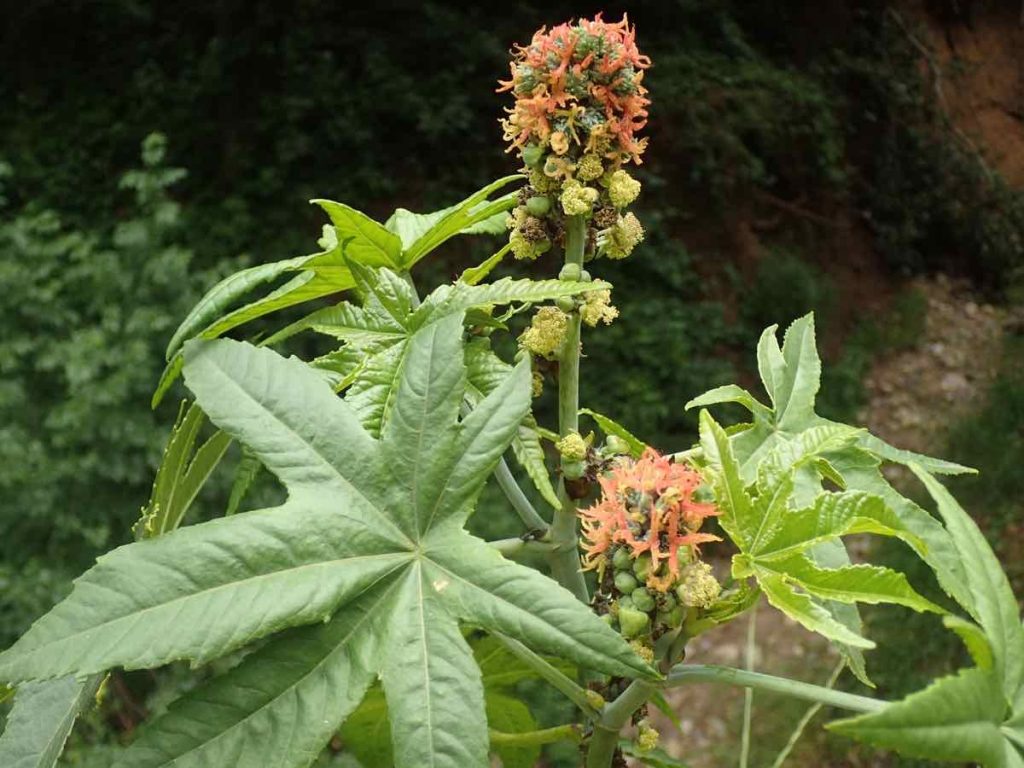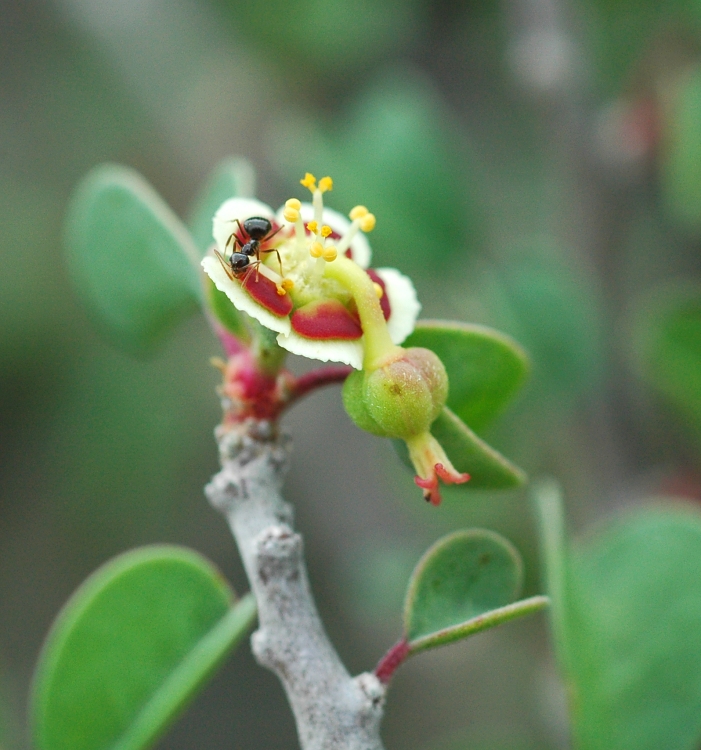
The Euphorbiaceae family, also known as the spurge family, is characterized by:
- Latex-producing Plants: the presence of latex, a milky, often toxic sap that is produced by specialized cells called laticifers. The latex serves various ecological purposes, such as deterring herbivores.
- Alternate Leaves: The leaves are arranged singly along the stem rather than in pairs or whorls.
- Inflorescence Types: The cyathium is a unique reproductive structure characteristic of the family, consisting of reduced male and female flowers surrounded by specialized bracts.
- Reduced Flowers: The flowers of Euphorbiaceae are often reduced in size and have a unique structure. The presence of reduced or unisexual flowers is common in this family.
- Fruit Types: The fruits of Euphorbiaceae plants vary widely and can be capsules, nuts, or fleshy. Some species have explosive fruits that help in seed dispersal.
- Diversity of Habitats: Euphorbiaceae is a cosmopolitan family found in a variety of habitats, ranging from tropical rainforests to deserts. The family includes both herbaceous and woody plants.
- Economic Importance: Some members of the Euphorbiaceae family are of economic importance. For example, the rubber tree (Hevea brasiliensis) is a source of natural rubber, and castor oil plant (Ricinus communis) produces castor oil.
- Toxicity: Many plants in the Euphorbiaceae family contain toxic compounds, particularly in their latex. This toxicity is a defense mechanism against herbivores.
- Ecological Roles: Euphorbiaceae plants often play important roles in their ecosystems. Some species are pioneer plants, colonizing disturbed areas, while others are important components of diverse plant communities.
The family contains over 7,500 species. As with any large plant family, there is considerable variation among its members.

Link to the key in the Jepson manual.
Video showing characteristics of the Euphorbiaceae.